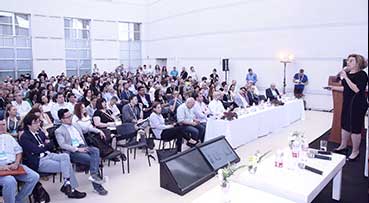The transition to hybrid work models has brought about significant changes in the workplace, impacting both employees and managers. While employees generally embrace this new way of working, recent data from a survey conducted by Future Forum reveals the increasing burden and burnout experienced by managers. The survey highlights a growing disparity between employees and managers in adapting to the evolving work landscape, with managers reporting heightened stress, disrupted work-life balance, and decreased job satisfaction. This article delves into the reasons behind these disparities and underscores the importance of managers adapting their approach to effectively lead in the hybrid work era.
According to the survey, between 2021 and 2022, employees reported significant improvements in their hybrid work experience, including a 25% reduction in stress and anxiety, an 11% enhancement in work-life balance, and a 12% increase in overall job satisfaction. However, managers at all levels reported contrasting results, with a staggering 40% surge in stress and anxiety, a 20% decline in work-life balance, and a 15% decrease in job satisfaction. Notably, middle managers, particularly in large companies, emerged as the segment with the lowest overall scores.
Contrary to the assumption that managers are resistant to hybrid work, the survey findings indicate that both managers and non-managers embrace the hybrid work model. However, the data reveals that senior managers tend to lean towards spending more time in the office and reducing their time away. This shouldn’t come as a surprise.
Over the past three years, managers have faced new challenges stemming from evolving workplace expectations and norms. In times of change, they are confronted with a choice: cling to past methods that have served them well for decades, or embrace new approaches and tools. Despite this, numerous headlines advocating for a return to traditional office settings suggest that many managers are strongly inclined to revert to what worked in the past. However, this inclination to “return” is misguided. To navigate the complexities of the hybrid work environment, managers must recognize that reverting to the old ways is counterproductive. It is crucial to acknowledge the differences in the current work environment and the demands placed on managers.
In the past, team management revolved around three distinct scenarios. Firstly, there was the traditional approach of managing individuals in the same physical location, each working from their designated space. Secondly, teams would gather in one place for planned and spontaneous meetings, following the conventional office setup. Thirdly, managing teams across different locations or countries involved relying on telephone and video meetings, which were prevalent even before the pandemic. These situations were characterized by the notion of a designated workspace and defined working hours, with occasional work outside those hours falling within a recognized boundary. Consequently, management tools and practices were developed to accommodate these scenarios.
However, the emergence of a new dominant work mode has transformed the landscape. The fourth mode, known as “separated in time and place,” pertains to teams where individuals work partially from home or remotely, especially when everyone operates remotely on different days. This hybrid arrangement means that on any given day, some team members are in the office while others work from home. Even with assigned remote workdays, this remains the prevailing situation on most days in hybrid organizations.
Thus, the hybrid work environment not only changes the physical location of work but also reshapes the concept of working hours. We have come to realize that a workday from home is no longer confined to traditional hours. Remote employees now operate at different times throughout the day and week. Without redefining management norms, availability hours, and coordination tools, the availability of “acceptable working hours” diminishes. This poses challenges in terms of spontaneous communication and scheduling meetings when everyone is available. Moreover, work now happens around the clock, with some starting at six in the morning and others working until eleven at night. While this flexibility may suit individual employees, it creates difficulties for those needing timely information and collaborating across different time zones. The most significant challenge falls on managers, who are expected to be available and responsive from early morning to late at night, maintaining constant communication with their teams.
This approach is not sustainable. It occurs because managers are attempting to manage work in the current situation using outdated methods from when everyone worked in the office during traditional working hours. We cannot progress into the future while clinging to the past. We must adapt and learn to manage effectively in this new work landscape, or else we risk being left behind.
One crucial aspect of effective management in the hybrid work era is the development of power skills. In the past, managers were primarily promoted based on their proficiency in core professional skills. However, in today’s work landscape, especially in a hybrid environment, being an effective manager requires more than just technical expertise. It entails cultivating relationships, fostering a positive culture, and promoting connectedness among team members. Managing a hybrid team is distinct from managing in a traditional setting, emphasizing the importance of continuous and transparent communication, clear expectations and goals, collaborative tools and processes, a strong team culture, and above all, the recognition that management approaches must adapt to diverse work environments and individuals. These abilities are now recognized as essential power skills.
The term “power skills” has replaced what was previously referred to as “soft skills.” This shift in terminology was introduced by Udemy in their 2022 learning trends report. According to their findings, the most sought-after skills no longer revolve solely around the core competencies of a profession or training in rapidly evolving fields. Skills such as leadership, teamwork, communication, productivity, resilience, and well-being have become vital for individual performance. These skills are no longer mere recommendations but have become essential for success in the workplace and one’s career. This is why they are now referred to as power skills, as they provide us with the ability to collaborate, communicate effectively, and lead. Consequently, prioritizing the development of these skills in employee and managerial training has become imperative.
Managers play a significant role in shaping their company’s policies, yet a startling 60% of them admit to making decisions without sufficient input from employees. This lack of direct feedback leads to policies that may not align with the needs and expectations of employees in the changing world of work. To bridge this gap, managers must actively seek and consider employee perspectives when making decisions regarding hybrid work arrangements.
Elements of flexible work arrangements are here to stay because, according to Professor Klotz, who coined the term “the great resignation” in May 2021, we are only now witnessing a stabilization of turnover after the peak exodus in 2022. This shift is not driven by layoffs or a recession but rather by the evolving priorities of organizations, including the emphasis on flexible work arrangements, employee development, and well-being. It is crucial for managers, especially senior managers, to recognize that their own experiences may differ from those of their employees. The current state of the work landscape is shaped by the experiences of employees, highlighting the need for managers to understand and adapt to these evolving dynamics.
In conclusion, the transition to hybrid work models has presented both challenges and opportunities for employees and managers alike. While employees have generally embraced this new way of working, managers have faced increased stress and difficulties in adapting. To effectively lead in the hybrid work era, managers must adapt their approach, prioritize the development of power skills, actively seek employee feedback, and recognize the evolving priorities and experiences of their teams. By embracing these changes, managers can navigate the complexities of the hybrid work environment and ensure success for themselves and their teams in the future of work.

![large-AX1A2125-2[1] large-AX1A2125-2[1]](https://niritcohen.com/wp-content/uploads/elementor/thumbs/large-AX1A2125-21-pnzedcs72atx5aeurqytqdiihxixlq02re9mlz805s.jpg)






